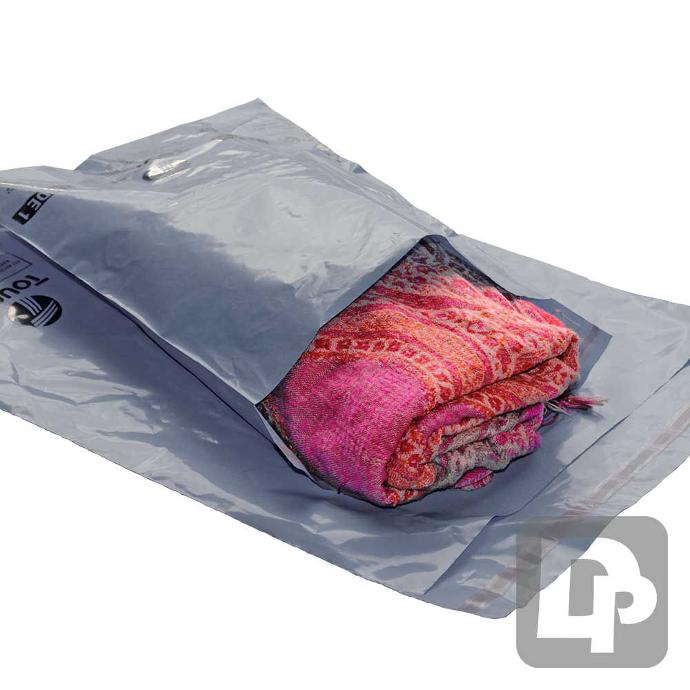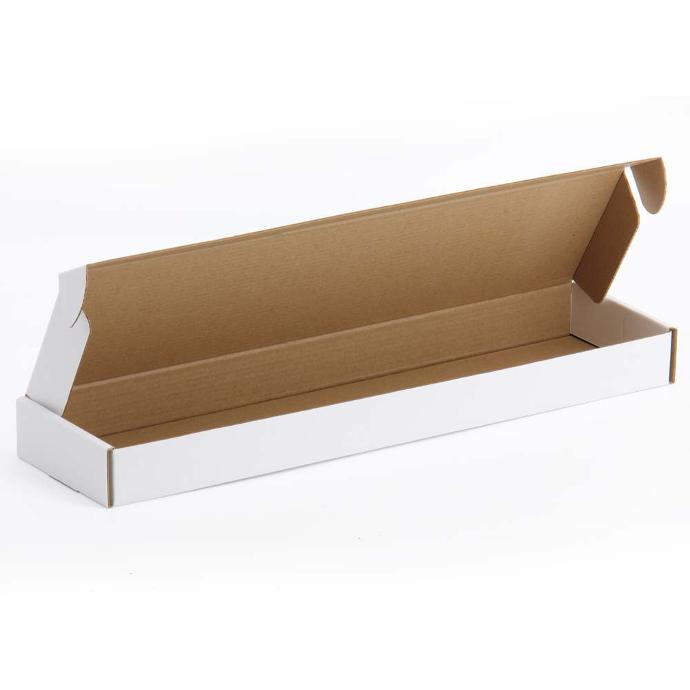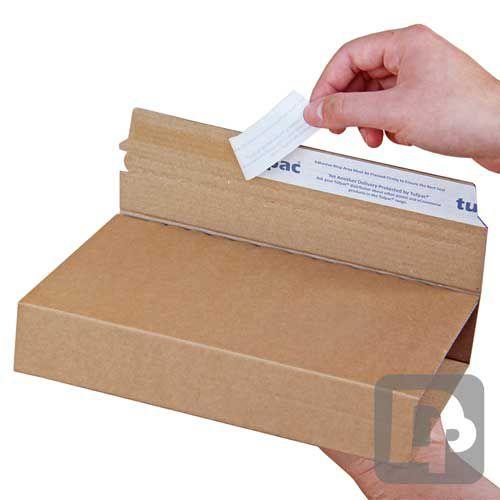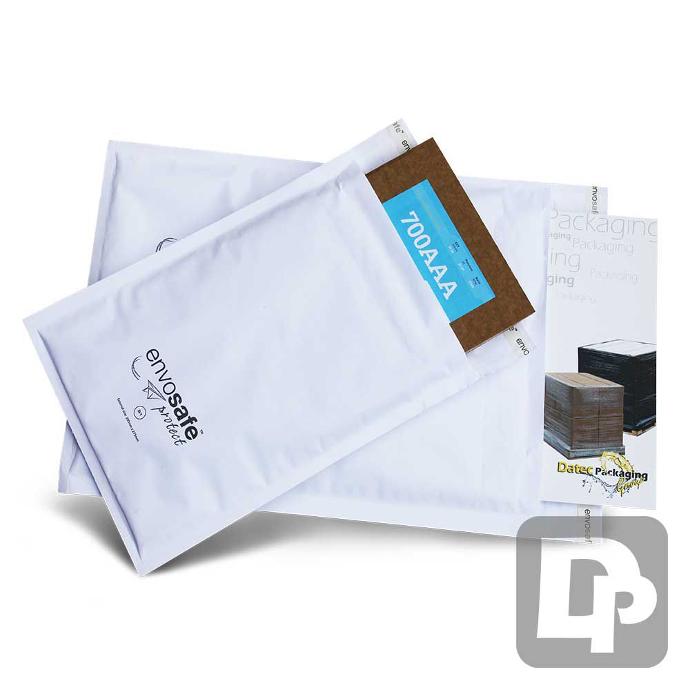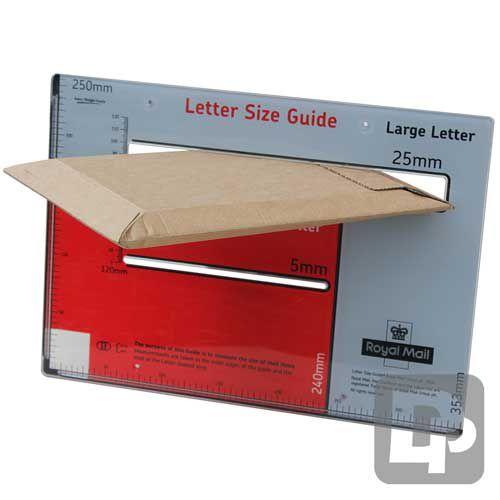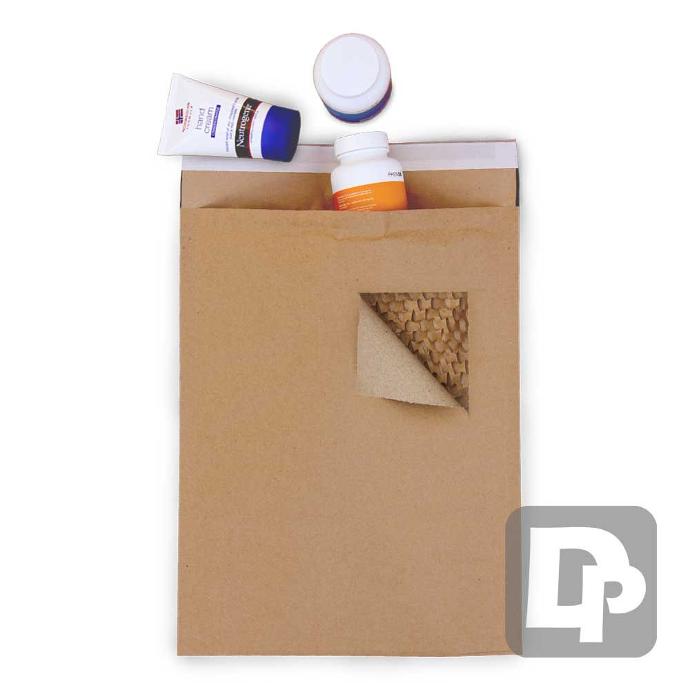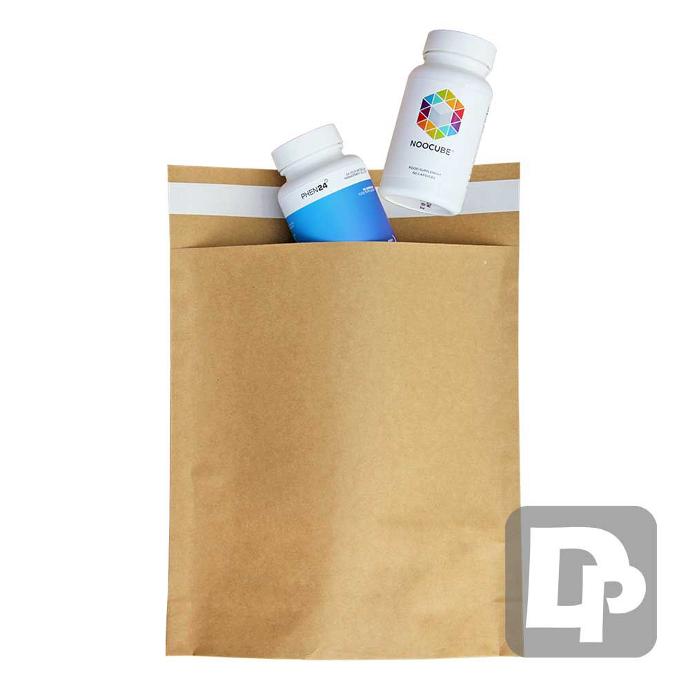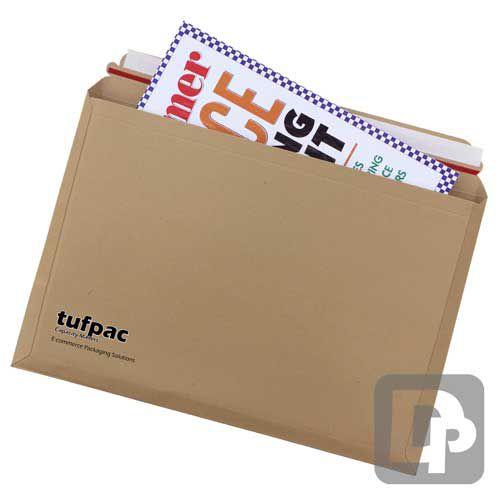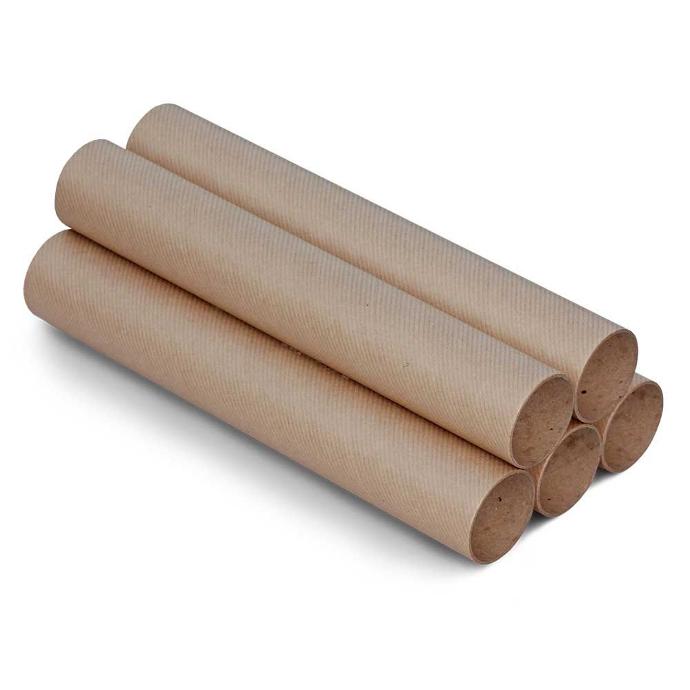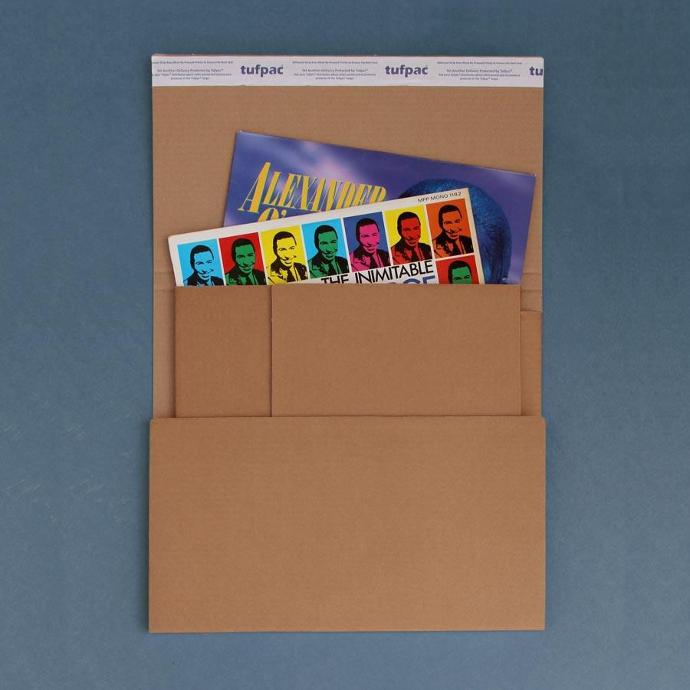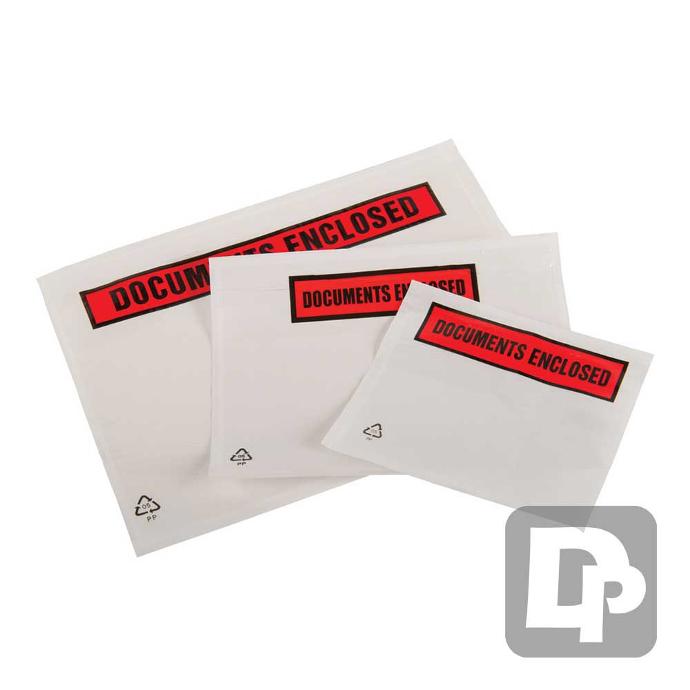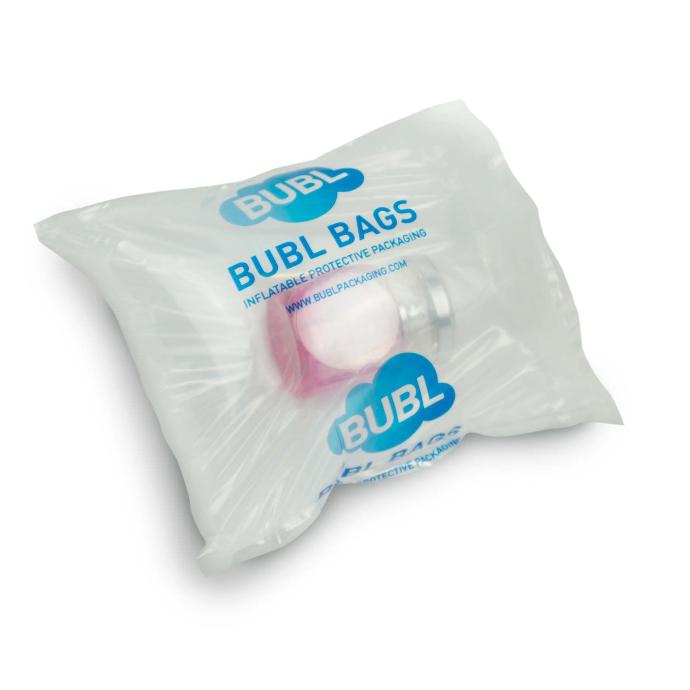- Products
- Postal Packaging
-
Book Wraps
-
PiP Postal Boxes
-
LP Record Mailers
-
Mailing Bags
-
Cardboard Mailer Envelopes
-
Twistwrap Book Boxes
-
The ecoMLR
Postal Packaging
Postal packaging mailers that are manufactured from cardboard and most have been specifically designed for sending online orders. They are usually made using sturdy materials suitable for sending via courier, and are often size adjustable to help pack different sized orders quickly and easily without the need for voidfill.
More about Postal Packaging
In the UK, postal packaging refers to the various types of packaging materials and products used to send items through the postal system. Postal packaging is designed to protect the contents of a package during transit and delivery. It can come in various forms, including envelopes, boxes, bags, and other containers. The packaging used for postal purposes is often specifically designed to meet the requirements of the postal system, ensuring that items are secure, protected, and properly labeled for efficient handling and delivery.
Postal packaging may vary depending on the type of item being sent, its size, weight, fragility, and other characteristics. Common types of postal packaging in the UK include:
Envelopes: These are typically made of paper or cardboard and are used to send documents, letters, and small items that don't require much protection.
Boxes: Cardboard boxes are commonly used for shipping larger or more fragile items. They come in various sizes and strengths to accommodate different types of goods.
Bubble Mailers: These are padded envelopes with a layer of bubble wrap inside, providing cushioning and protection for more delicate items.
Mailing Bags: These are lightweight plastic or polythene bags used for sending clothing, textiles, and other lightweight items.
Tubes: Cylindrical cardboard or plastic tubes are used for shipping items like posters, artwork, and rolled documents.
Padded Envelopes: These envelopes have padding or cushioning built into them, providing extra protection for items.
Jiffy Bags: These are padded envelopes with a layer of padding made from recycled paper fibers, providing protection for items while being environmentally friendly.
Mailer Boxes: These are self-contained boxes that are designed to be both the packaging and shipping container. They are often used for subscription services and e-commerce shipments.
It's important to choose the right type of postal packaging based on the nature of the item you're sending. Proper packaging helps ensure that your items arrive safely and undamaged to their destination. Additionally, following the guidelines set by the postal service can help ensure that your package is accepted and processed smoothly within the postal system.
Postal packaging broadly splits into five specific packaging categories, mailing boxes, postal wraps, packaging envelopes, PiP mailing boxes and mailing bags. Our comprehensive range of postal packaging can be used to pack almost any small to medium sized online orders. From high performance protective mailing packs, to low cost economical cardboard mailers that are super fast to pack, and everything else in between, we are confident you'll find the right postal pack you need for your products. Explore our range below, and if you can't see exactly what you are looking for, get in touch, we have a bespoke designed postal packaging service too!
How to choose Postal Packaging
Choosing the best type of postal packaging depends on several factors, including the nature of the items you're shipping, your branding strategy, budget, and the overall customer experience you want to provide. Here's a step-by-step guide to help you make an informed decision:
Understand Your Products: Consider the size, weight, shape, and fragility of the items you're shipping. Different products may require different levels of protection and packaging solutions.
Define Your Branding: Determine how you want your brand to be represented through the packaging. Consider your logo, colors, fonts, and overall design aesthetic. Your packaging should align with your brand's identity and values.
Consider the Unboxing Experience: Think about how you want recipients to feel when they open your package. Creative and visually appealing packaging can enhance the unboxing experience and leave a positive impression.
Budget Constraints: Set a budget for your packaging. Custom packaging can vary in cost, so consider how much you're willing to invest while ensuring that the quality matches your brand's standards.
Quantity and Scale: Depending on the scale of your operations, consider whether you need a few custom packaging options or a larger quantity for consistent branding across multiple shipments.
Shipping Method and Regulations: Be aware of any specific requirements or guidelines set by the postal service you're using. Ensure that your chosen packaging meets their standards for size, weight, labeling, and materials.
Environmental Considerations: If sustainability is important to your brand, opt for eco-friendly packaging options, such as recyclable, biodegradable, or compostable materials.
Customer Preferences: Research your target audience and their preferences. What type of packaging would resonate most with them? Consider conducting surveys or gathering feedback to inform your decision.
Product Value and Image: The perceived value of your products can be influenced by the quality of your packaging. For higher-end or luxury items, consider packaging that reflects their value.
Functionality and Protection: Ensure that the chosen packaging provides adequate protection for your products during transit. Fragile items might require extra cushioning or padding, while durable items may need less protection.
Versatility and Flexibility: Choose packaging that can accommodate a range of products. Versatile packaging solutions can save you time and effort when shipping different types of items.
Customization Options: Consider the degree of customization offered by different packaging types. Some options may allow for more detailed customization, while others might have limitations.
Test and Gather Feedback: If possible, start with a small batch of custom packaging and test it with a sample group of customers. Gather feedback and adjust your packaging strategy based on their responses.
Consult Packaging Experts: Seek advice from packaging suppliers or professionals who have experience in creating custom packaging solutions. They can provide insights and recommendations based on your specific needs.
Ultimately, the best type of postal packaging for your business will be one that aligns with your brand identity, effectively protects your products, enhances the customer experience, and meets any logistical and budgetary requirements you have. Taking the time to carefully consider these factors will help you make a well-informed decision that contributes to the success of your shipping and branding efforts.
It is also important when you are posting your products, to think about what areas are most at risk of being damaged. Here are a few questions you need to ask yourself before you select one of our postal or mailing packaging products:
- Is my product prone to creasing? If so you need to look for a rigid cardboard mailer product as this will add rigidity and reduce the risk of your products becoming creased in transit.
- Are the corners vulnerable to bashing? Hard corners that are easily damaged need a mailing product with strengthened corners, so you need to choose a product like our book wraps which have a crumple zone on the corners to cushion any corner impact.
- Do the surfaces need protecting from scratches? A protective bubble or foam layer will protect the surfaces of your products so take a look at our bubble bags and bubble mailers to cushion your products.
Frequently Asked Questions about Postal Packaging
What is Postal Packaging?
Postal packaging is a range of packaging that can be used to post items through the postal service. Postal packaging is usually used to describe packaging products up to the Royal Mail medium parcel size criteria.
What are the 5 Categories of Postal Packaging?
The five categories of postal packaging are; postal bags, mailing boxes, book wraps, cardboard mailers, and postal tubes.
Should my Company use Postal Packaging?
Your company should use postal packaging if you are sending items by Royal Mail or other postal services. If your company is an ecommerce store, mail order house, or fulfilment store, you can use postal packaging for packing items quickly, efficiently, and at low cost.
Why is proper postal packaging important? Proper packaging ensures that items are protected from damage, tampering, and weather conditions during transportation. It also helps prevent items from shifting or getting crushed during handling.
How do I choose the right packaging for my item? Consider the size, weight, fragility, and nature of your item. Select packaging that provides adequate protection and cushioning. The packaging should also comply with the postal service's guidelines to avoid delays or rejection.
Can I reuse packaging materials for mailing? Reusing packaging materials like boxes and envelopes is acceptable as long as they are in good condition and properly sealed. Cover or remove any old labels or markings to prevent confusion.
Are there restrictions on what I can send through the postal system? Yes, there are restrictions on sending hazardous materials, perishable items, and certain restricted goods. Check with your postal service for a list of prohibited and restricted items.
Do I need to label my package? Yes, proper labeling is essential. Include the recipient's address, return address, and any required postage or tracking information. Clear and legible labeling helps ensure accurate delivery.
How should I seal my package? Use appropriate sealing methods such as tape, adhesive, or glue to ensure your package remains securely closed during transit. Reinforce seams and edges to prevent accidental opening.
Can I track my package after it's been sent? Many postal services offer tracking options for packages. You can use tracking numbers provided at the time of sending to monitor the progress and delivery status of your package.
What if my package gets damaged during transit? If your package arrives damaged, contact your postal service's customer service for guidance on filing a claim or seeking compensation for the damaged items.
Are there eco-friendly packaging options available? Yes, there are eco-friendly packaging options, such as recyclable, biodegradable, and compostable materials. Using environmentally conscious packaging can help reduce your carbon footprint.
How do I calculate postage for my package? Postage is determined by factors like package size, weight, destination, and shipping speed. You can use online postage calculators provided by postal services or visit a local post office for assistance.
What should I do if my package is lost or delayed? Contact your postal service's customer support and provide them with the relevant tracking information. They can initiate an investigation and provide updates on the status of your package.
Remember that postal packaging guidelines and procedures may vary between countries and postal services. It's important to check with your local postal authority or service provider for the most accurate and up-to-date information.
Custom Postal Packaging
Custom postal packaging refers to packaging materials and designs that are tailored to meet specific branding, marketing, or functional needs of a sender. Unlike generic or standard packaging, custom postal packaging allows businesses and individuals to create a unique and personalized packaging solution for their shipments. This can help enhance the overall customer experience, reinforce branding efforts, and provide added value to recipients.
Key aspects of custom postal packaging include:
Branding and Marketing: Custom packaging provides an opportunity to showcase your brand identity. You can incorporate your logo, colors, slogans, and other branding elements onto the packaging, helping to create a memorable and recognizable impression on the recipient.
Size and Design: Custom packaging allows you to choose the dimensions, shape, and design that best suit your items. This ensures that your products fit securely and are well-protected during transit.
Materials: You can select specific materials that align with your brand values or the type of items you're sending. Options include eco-friendly materials, sustainable packaging, and various levels of protection (e.g., padding, waterproofing).
Personalization: Some custom packaging options enable you to personalize each package with individual names, messages, or greetings. This adds a personal touch that can enhance customer loyalty and satisfaction.
Promotional Elements: You can include promotional materials, such as discount codes, coupons, or product samples, within the custom packaging. This can encourage repeat business and drive future sales.
Unboxing Experience: Custom packaging can contribute to an enjoyable unboxing experience for the recipient. Creative and thoughtful packaging can generate excitement and positive feelings about your brand.
Product Protection: Custom packaging allows you to design packaging that is specifically suited to the fragility or sensitivity of your products, reducing the risk of damage during transit.
Event and Seasonal Packaging: Custom packaging can be tailored for specific events, holidays, or seasons, adding a festive and relevant touch to your shipments.
E-commerce and Subscription Boxes: Many e-commerce businesses use custom packaging for subscription boxes, enhancing the perceived value of the subscription and creating a sense of anticipation for customers.
Cost Considerations: While custom packaging can offer numerous benefits, it's important to balance customization with cost-effectiveness. Custom packaging may involve additional expenses compared to standard packaging options.
Custom postal packaging is widely used by businesses to differentiate themselves in a competitive market and create a lasting impression on customers. It's an effective way to add value to your products and enhance the overall shipping and receiving experience. When considering custom packaging, it's essential to work with reliable packaging suppliers or manufacturers who can help you create high-quality, functional, and visually appealing solutions.
Custom postal packaging can be designed and manufactured to your required size and also printed with your own logos and messages in your brand colours. We offer a range of different customisations for postal packaging, the most popular ones are below:
- Custom Printed Postal Packaging: We can print your logos, messages, and social media tags, as well as full coverage brand patterns and colours on most of our postal packaging products.
- Bespoke Size Postal Packaging: The size of most of our postal packaging range can be customised to fit your particular products. If you have an item that you need to pack but it doesn't fit in any of our standard sizes, don't worry, we can design a custom size postal pack for you.
- Custom Specification: The strength and durability of the cardboard or other materials used in the construction of your postal packaging can be customised. If you have a particularly heavy item, or a product that needs extra protection we can make a stronger postal box or mailing bag to suit.
Exploring the Different Types of Custom Postal Packaging
There are various types of custom postal packaging options available to businesses and individuals looking to personalize their packaging for shipments. These options cater to different needs, styles, and branding preferences. Here are some common types of custom postal packaging:
Custom Printed Boxes: These are corrugated or cardboard boxes that can be printed with your brand logo, colors, and other design elements. They provide a professional and cohesive look for your shipments while protecting the contents.
Branded Envelopes: Custom envelopes can feature your brand's logo, colors, and other design elements. They are suitable for sending documents, smaller items, or promotional materials.
Printed Mailer Bags: Polythene or plastic mailer bags can be customized with your branding and design. They are lightweight and suitable for shipping clothing, textiles, and soft goods.
Printed Bubble Mailers: These padded envelopes feature a layer of bubble wrap for added protection and can be customized with your branding. They are commonly used for shipping small, delicate items.
Custom Tape: Adhesive tape with your brand's logo or message can be used to seal your packages securely. It adds a personalized touch and helps reinforce your brand.
Custom Stickers and Labels: Custom stickers or labels can be applied to plain packaging to add branding, product information, or special messages.
Printed Tissue Paper: Wrapping items in custom printed tissue paper adds an elegant and branded touch to your shipments.
Subscription Boxes: Custom packaging for subscription services can include uniquely designed boxes with branding, messaging, and compartments for different products.
Fulfillment Inserts: These can include thank-you notes, product information, discount codes, or other promotional materials that are inserted into the package to engage and delight recipients.
Custom Inserts and Dividers: These are designed to fit inside a box to securely hold products in place, preventing movement and potential damage during transit.
Seasonal or Special Event Packaging: Packaging customized for holidays, special occasions, or events can create excitement and resonate with recipients during those times.
Eco-Friendly Custom Packaging: Using sustainable materials and designs that highlight your commitment to the environment can appeal to environmentally conscious customers.
Personalized Packaging: This can involve printing individual recipient names or messages on the packaging to create a more personal connection.
Custom Shipping Labels and Postage Stamps: You can create custom shipping labels or stamps that reflect your brand identity or add a creative touch to your packages.
When opting for custom postal packaging, consider factors such as your budget, the type of items you're shipping, your target audience, and your overall branding strategy. Work with reputable packaging suppliers or manufacturers to ensure the quality, durability, and visual appeal of your custom packaging solutions. Custom packaging can play a significant role in enhancing your brand's image, improving customer experience, and setting your shipments apart in a competitive market.
|
|
|
|
